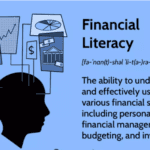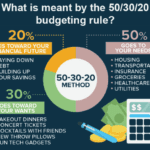How to Create a Budget That Actually Works
Creating a budget sounds simple—track your income, subtract your expenses, and stick to the plan. But in reality, many people struggle to maintain a budget that truly works for them. Unexpected costs, impulse spending, and unrealistic financial goals can all derail a budget.
The key to success is building a budget that is realistic, flexible, and sustainable. In this post, we’ll walk you through the step-by-step process on how to create a budget that actually works.
Step 1: Set Clear Financial Goals
Before you start crunching numbers, ask yourself:
- What do I want to achieve financially? (Save for a house, pay off debt, travel more?)
- What’s my timeline? (Short-term vs. long-term goals)
- How much can I realistically save each month?
Having clear goals will motivate you to stick to your budget and make smart financial decisions.
Step 2: Track Your Income and Expenses
To create an effective budget, you need a clear picture of your income and spending habits.
- Track your income: Include your salary, freelance work, side hustles, or passive income.
- Track your expenses: Break them into categories like rent, groceries, entertainment, transportation, and savings.
📌 Pro Tip: Use apps like Mint, YNAB (You Need a Budget), or Excel spreadsheets to simplify tracking.
Step 3: Categorize and Prioritize Your Expenses
Divide your expenses into three main categories:
1. Fixed Expenses (Essentials)
- Rent/mortgage
- Utilities (electricity, water, internet)
- Loan payments (student loans, car loans)
- Insurance (health, car, home)
2. Variable Expenses (Day-to-Day Spending)
- Groceries
- Transportation
- Dining out
- Entertainment
- Shopping
3. Savings and Investments
- Emergency fund
- Retirement contributions
- Investments (stocks, real estate, etc.)
📌 Pro Tip: Aim to allocate at least 20% of your income toward savings and debt repayment.
Step 4: Choose a Budgeting Method
There’s no one-size-fits-all approach to budgeting. Choose a method that fits your lifestyle:
1. The 50/30/20 Rule (Best for beginners)
- 50% Needs (rent, bills, groceries)
- 30% Wants (shopping, dining, entertainment)
- 20% Savings & Debt Repayment
2. Zero-Based Budgeting (Best for detail-oriented planners)
- Every dollar is assigned a job.
- Income – Expenses = $0 (every dollar has a purpose).
- Great for tracking and eliminating wasteful spending.
3. The Envelope System (Best for cash spenders)
- Use envelopes with specific cash amounts for different spending categories.
- Once the envelope is empty, no more spending in that category!
Choose a system that matches your financial goals and spending habits.
Step 5: Cut Unnecessary Expenses
Look for areas where you can reduce spending without sacrificing your quality of life.
✅ Cancel unused subscriptions (gym memberships, streaming services).
✅ Limit impulse purchases by using a 24-hour rule before buying non-essentials.
✅ Cook at home more often instead of eating out.
✅ Shop smarter by using cashback apps and looking for discounts.
Even small changes can lead to big savings over time!
Step 6: Build an Emergency Fund
Life is unpredictable. Having 3–6 months’ worth of expenses saved will protect you from unexpected financial stress.
💡 Start small: Set aside $500–$1,000 and gradually increase it.
💡 Keep it separate: Open a high-yield savings account for emergencies only.
Step 7: Review and Adjust Your Budget Regularly
A budget is not set in stone. Life changes—your budget should too!
📅 Set a reminder to review your budget monthly.
📉 Adjust categories if you’re overspending or underspending.
🎯 Refocus on goals if you lose motivation.
Flexibility is key to making your budget sustainable long-term.
Final Thoughts on How to Create a Budget: Make Your Budget Work for You
A budget should empower you, not feel restrictive. By setting realistic goals, tracking expenses, and adjusting as needed, you can create a budget that helps you achieve financial freedom.



